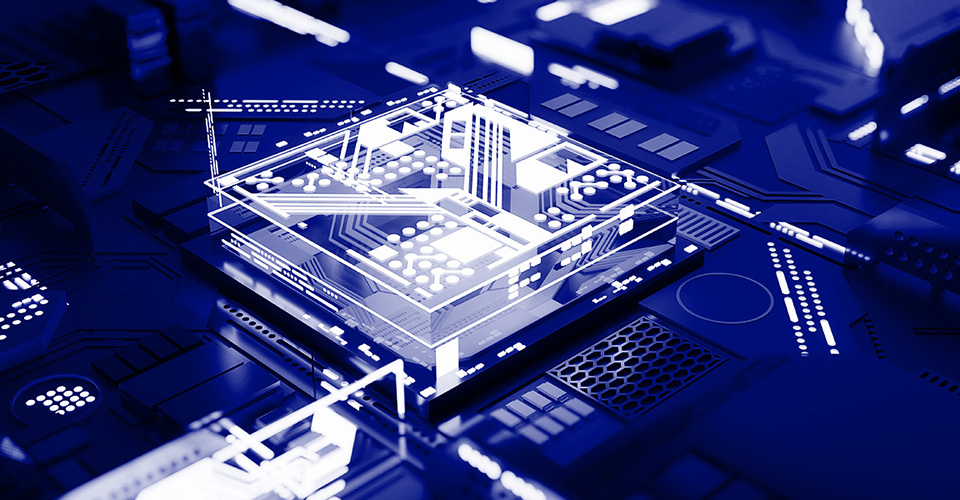Quantum computation (QC) holds out tremendous promise for efficiently solving some of the most difficult problems in computational science, such as integer factorization, discrete logarithms, and quantum modeling that are intractable on any present or future conventional computer. New concepts for QC implementations, algorithms, and advances in the theoretical understanding of the physics requirements for QC appear almost weekly in the scientific literature.

Applications of Quantum Technology
From Discovery to Deployment
Applied Computing Road Map
This rapidly evolving field is one of the most active research areas of modern science, attracting substantial funding that supports research groups at internationally leading academic institutions, National Laboratories and major industrial research centers. Well-organized programs are underway in the United States, the European Union and its member nations, Australia, and in other major industrial nations. Start-up quantum information companies are already in operation. A diverse range of experimental approaches from a variety of scientific disciplines are pursuing different routes to meet the fundamental quantum mechanical challenges involved. Yet experimental achievements in QC, although of unprecedented complexity in basic quantum physics, are only at the proof-of-principle stage in terms of their abilities to perform QC tasks. It will be necessary to develop significantly more complex quantum-information processing (QIP) capabilities before quantum computer science issues can begin to be experimentally studied.
To realize this potential will require the engineering and control of quantummechanical systems on a scale far beyond anything yet achieved in any physics laboratory. This required control runs counter to the tendency of the essential quantum properties of quantum systems to degrade with time ("decoherence"). Yet, it is known that it should be possible to reach the "quantum computer science test-bed regime" — if challenging requirements for the precision of elementary quantum operations and physical scalability can be met. Although a considerable gap exists between these requirements and any of the experimental implementations today, this gap continues to close.
Global Race
Quantum computing is a global race to conceive and create the ultimate computing machine. If fully-functional quantum computers can be built, and there is still a question that they can, they will be able to rapidly factor extremely large numbers, making them extremely useful for solving certain large mathematical problems at speeds faster than today's fastest supercomputers and for cracking secret codes that have been encrypted by traditional methods. A functional quantum computer would put much of the world's past and present encrypted information at risk of being quickly deciphered.
Los Alamos researchers were among the first to make tangible advances in quantum computation. In 1998, Los Alamos scientists used nuclear magnetic resonance techniques to create a prototype liquid-based quantum computer within trichloroethylene molecules. They went on to build a slightly larger device in 2000, but the technology is far from the desired end state.
More recent research efforts have focused on constructing a quantum computer as a solid-state device. This will require the ability to manipulate individual atoms in some kind of a solid matrix or lattice and Los Alamos researchers are exploring this technology in collaboration with researchers from the University of New South Wales in Sydney, Australia, California Institute of Technology, and the University of Maryland.
Quantum Cryptography
In quantum key distribution (QKD), two parties use single photons that are randomly polarized to states representing ones and zeroes to transmit a series of random number sequences that are used as keys in cryptographic communications. This string of numbers becomes a quantum key that locks or unlocks encrypted messages sent via normal communication channels. Because the transmitted photons cannot be intercepted without being destroyed, and the act of interception then tips off the message receiver, QKD is considered the most powerful data encryption scheme ever developed and its codes are, by all indications, virtually unbreakable.
World Record
Although the quantum key distribution technique was not created at Los Alamos, laboratory researchers have taken the technology, quite literally, to new lengths in the interest of national security. In 1999, Los Alamos researchers set a world record when they sent a quantum key through a 31-mile-long optical fiber. While this distance proved sufficiently far enough to create QKD networks connecting closely-spaced government offices or localized bank branches, the system failed at greater distances when signal loss increased to the point at which the photons were absorbed by normal optical fiber noise. To achieve longer distances, Los Alamos researchers developed a free-space quantum cryptography system that could send keys through the air. Los Alamos quantum scientists developed a transportable, self-contained QKD system that used polarized photons to send information through the air for distances of up to 10 miles.
This mobile trailer-based QKD system could be quickly deployed in the field and was capable of continuous, automated transmission in both daylight and darkness. Today, Los Alamos researchers are in the process of taking this technology even further by developing a smaller scale version that is capable of being put on an Earthorbiting satellite for transmitting quantum keys distances of hundreds of miles between the satellite and a ground station.

Contact Us
Quantum Institute
- Los Alamos National Laboratory
- P.O. Box 1663
- Los Alamos, NM 87545